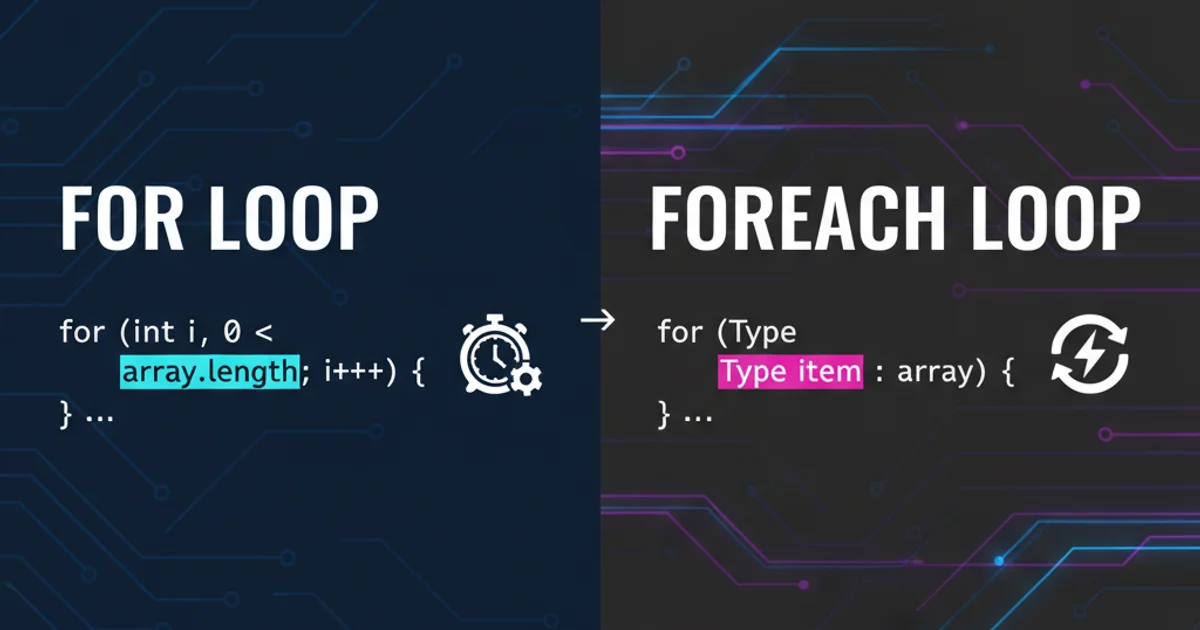how to print values in console using scriplet in javascript while a function is called
Categories:
Debugging JSP Scriptlets: Printing Values to the Console

Learn how to effectively print values to the console from JSP scriptlets, especially when JavaScript functions are invoked, aiding in debugging and understanding server-side logic within a web context.
Debugging web applications often involves inspecting variable values at various stages of execution. When working with JavaServer Pages (JSP) and integrating JavaScript, you might encounter scenarios where you need to print server-side values (from scriptlets) to the browser's developer console, especially when these values are passed to or generated within JavaScript functions. This article will guide you through the techniques to achieve this, focusing on the interplay between JSP scriptlets and client-side JavaScript.
Understanding the Execution Context
Before diving into the methods, it's crucial to understand the execution context. JSP scriptlets (<% ... %>) are executed on the server-side before the page is sent to the client's browser. They generate HTML, CSS, JavaScript, or any other text content. Client-side JavaScript, on the other hand, executes in the user's browser after the page has been fully rendered by the server. This distinction is key to understanding why direct System.out.println() calls from a scriptlet won't appear in the browser's console.
sequenceDiagram
participant Browser
participant Server
Browser->>Server: Request JSP Page
Server->>Server: Execute JSP Scriptlets
Server-->>Browser: Send Generated HTML/JS
Browser->>Browser: Render Page & Execute Client-side JS
Browser->>Browser: `console.log()` output (if present)
Note over Server: `System.out.println()` output goes to server logsSequence of execution for JSP and client-side JavaScript
Method 1: Embedding Scriptlet Output Directly into JavaScript
The most common way to get server-side values into the client-side console is to embed the scriptlet's output directly into a JavaScript console.log() statement. This works because the scriptlet executes first, injecting its value into the JavaScript code that will then run in the browser.
<% String serverVariable = "Hello from JSP!"; %>
<script type="text/javascript">
function myFunction() {
var clientVariable = "Client-side value";
console.log("Server Variable: <%= serverVariable %>");
console.log("Client Variable: " + clientVariable);
}
// Call the function to see the output
myFunction();
</script>
Embedding a Java variable into a JavaScript console.log
StringEscapeUtils.escapeEcmaScript() from Apache Commons Lang to prevent JavaScript syntax errors.Method 2: Passing Scriptlet Values as Function Arguments
If you need to pass multiple server-side values to a JavaScript function for logging or further processing, you can define the function to accept parameters and then call it from the JSP, passing the scriptlet-generated values as arguments.
<%
String userName = "John Doe";
int userId = 12345;
boolean isActive = true;
%>
<script type="text/javascript">
function logServerData(name, id, active) {
console.log("User Name: " + name);
console.log("User ID: " + id);
console.log("Is Active: " + active);
}
// Call the function with values from JSP scriptlets
logServerData("<%= userName %>", <%= userId %>, <%= isActive %>);
</script>
Passing multiple server-side variables to a JavaScript function
"<%= myString %>"). For complex objects, you might need to serialize them to JSON on the server-side before embedding.Method 3: Using JSON for Complex Data Structures
For more complex data structures (e.g., lists, maps, custom objects), it's best practice to serialize them into JSON on the server-side using a library like Jackson or Gson, and then embed the JSON string into your JavaScript. This allows JavaScript to easily parse and work with the data.
<%@ page import="java.util.HashMap" %>
<%@ page import="java.util.Map" %>
<%@ page import="com.fasterxml.jackson.databind.ObjectMapper" %>
<%
Map<String, Object> userData = new HashMap<>();
userData.put("name", "Alice");
userData.put("age", 30);
userData.put("roles", new String[]{"admin", "editor"});
ObjectMapper mapper = new ObjectMapper();
String userDataJson = mapper.writeValueAsString(userData);
%>
<script type="text/javascript">
function processUserData(data) {
console.log("Received User Data:", data);
console.log("User Name: " + data.name);
console.log("User Roles: " + data.roles.join(', '));
}
// Parse the JSON string into a JavaScript object
var serverData = JSON.parse('<%= userDataJson.replace("\\", "\\\\") %>');
processUserData(serverData);
</script>
Serializing Java objects to JSON and embedding in JavaScript
replace("\\", "\\\\") in the JSON embedding. This is crucial for handling escaped backslashes within the JSON string when it's embedded into a JavaScript string literal, preventing syntax errors. Without it, a JSON string like {"path":"C:\\Users\\"} would become JSON.parse('{"path":"C:\Users\"}') which is invalid JavaScript.When to Use Server-Side vs. Client-Side Logging
While embedding scriptlet values into console.log is useful for debugging the data flow from server to client, remember that System.out.println() (or your logging framework like Log4j/SLF4J) in a scriptlet will print to your server's console/logs. Use server-side logging for debugging Java code execution, database interactions, or business logic. Use client-side console.log for debugging how server-generated data is consumed and processed by JavaScript in the browser.